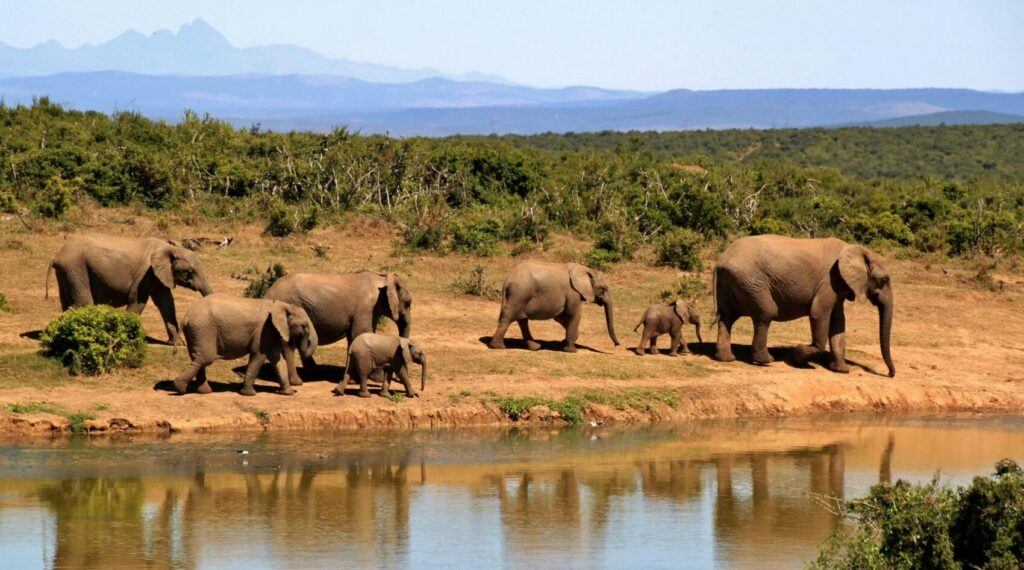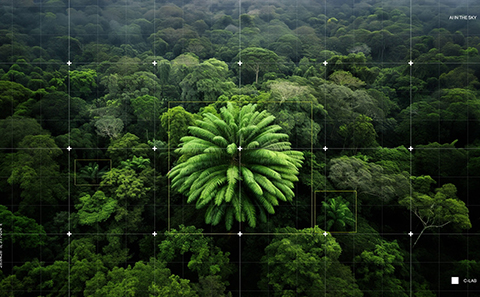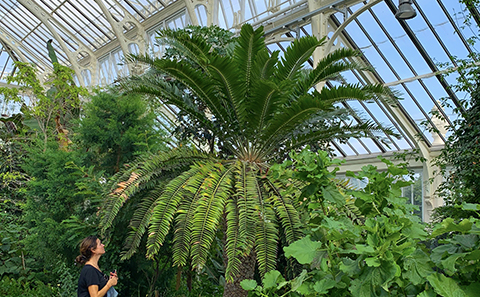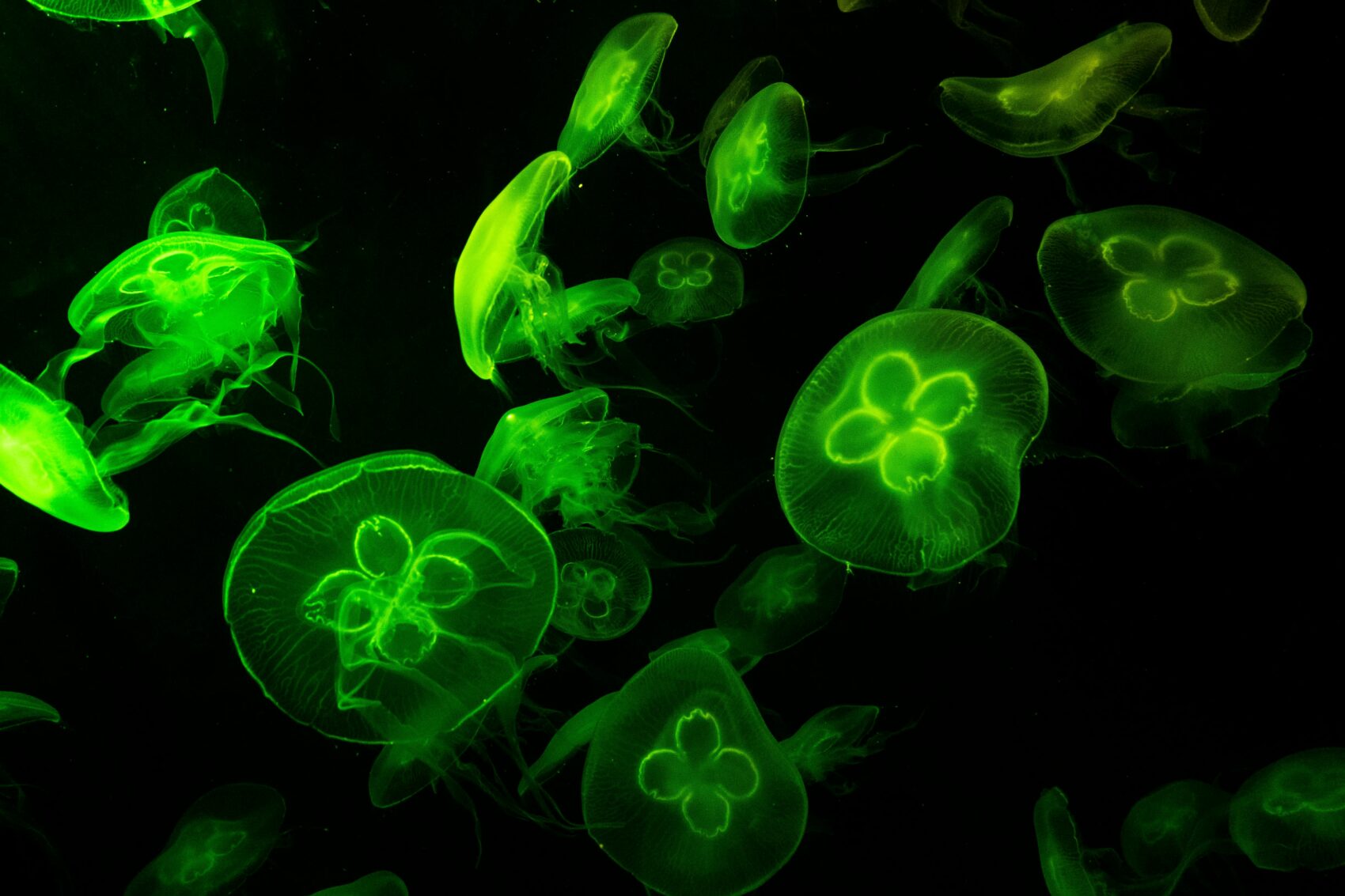In the Ngoye Forest of South Africa’s KwaZulu Natal province, a botanical love story is unfolding with the help of cutting-edge technology. Scientists are employing drones and artificial intelligence (AI) in a desperate search for a female partner for Encephalartos woodii (E. woodii), dubbed the “world’s loneliest plant.”
This innovative approach could be the key to saving one of the planet’s most endangered species and showcases the potential of AI in conservation efforts.
Key Points:
- E. woodii is considered extinct in the wild, with all existing plants being male clones.
- Researchers are using drones and AI to search 10,000 acres of South African forest for a female plant.
- The species predates dinosaurs and is part of the ancient cycad family.
- Finding a female would allow for natural reproduction and increased genetic diversity.
- The project highlights the potential of AI and drone technology in conservation efforts.
The Last of Its Kind: E. woodii's Solitary Existence
Encephalartos woodii’s story is one of both resilience and isolation. Discovered in 1895 in South Africa’s Ngoye Forest, this cycad species has captured the imagination of botanists and the public alike. As palaeontologist Richard Fortey wrote, “Surely this is the most solitary organism in the world.”
The cycad family, to which E. woodii belongs, has survived multiple mass extinctions and outlasted the dinosaurs. However, E. woodii faces a unique challenge: all known specimens are male clones of the single plant found over a century ago. Without a female counterpart, natural reproduction is impossible, leaving the species teetering on the brink of extinction.
Dr. Laura Cinti, a research fellow at the University of Southampton leading the search project, explains the plant’s predicament: “I was very inspired by the story of the E. woodii, it mirrors a classic tale of unrequited love. I’m hopeful there is a female out there somewhere, after all there must have been at one time.”
AI and Drones: A New Hope for Conservation

The search for a female E. woodii is no small task. The Ngoye Forest spans 10,000 acres of dense vegetation, much of which has never been fully explored. To tackle this challenge, Dr. Cinti’s team is employing a combination of drone technology and artificial intelligence.
Drones equipped with multispectral cameras capture images of the forest canopy, collecting data across five different light wavelengths. This technology allows researchers to distinguish particular plants and their features from the air. However, the sheer volume of data generated is staggering. A recent survey of just 195 acres produced 15,780 images.
This is where AI comes into play. Dr. Cinti explains, “With the AI, we are using an image recognition algorithm in order to recognize plants by shape. We generated images of plants and put them in different ecological settings, to train the model to recognize them.”
The AI system is designed to sift through thousands of images, identifying potential cycad specimens that warrant closer inspection. This innovative approach dramatically increases the efficiency of the search, allowing researchers to cover vast areas that would be impractical to explore on foot.
Challenges and Hopes
Despite the advanced technology at their disposal, the search team faces significant challenges. So far, less than 2% of the Ngoye Forest has been surveyed, and no female E. woodii has been found. The rarity of the species and the density of the forest make the search akin to finding a needle in a haystack.
However, the team remains optimistic. If a female plant isn’t located through the drone and AI approach, researchers are exploring alternative solutions. Dr. Cinti mentions the possibility of inducing a sex change in a male plant: “There have been reports of sex change in other cycad species due to sudden environmental changes such as temperature, so we are hopeful we can induce sex change in the E. woodii too.”
The Bigger Picture: AI in Conservation

The search for a female E. woodii is more than just a quest to save a single species. It represents a broader trend in conservation, where cutting-edge technology is being harnessed to address urgent environmental challenges.
As cycads rank among the most endangered organisms on Earth, success in this project could have far-reaching implications. It demonstrates the potential of AI and drone technology to revolutionize how we search for and protect endangered species, particularly in hard-to-access habitats.
Moreover, the project highlights the importance of genetic diversity in conservation efforts. All existing E. woodii specimens are clones, limiting their potential to adapt to environmental changes or resist diseases. Finding a female would allow for natural reproduction and introduce much-needed genetic variation into the species.
As Dr. Cinti puts it, “It would be amazing to bring this plant so close to extinction back through natural reproduction.” In doing so, we might not only save E. woodii but also gain valuable insights that could help protect other endangered species around the world.
The E. woodii project serves as a powerful reminder of the role technology can play in conservation. As we continue to face unprecedented environmental challenges, the combination of human ingenuity, artificial intelligence, and a touch of romance might just be the key to preserving the rich biodiversity of our planet.
Frequently Asked Questions (FAQ)
E. woodii is a critically endangered cycad species from South Africa, with all known specimens being male clones of a single plant discovered in 1895.
AI analyzes drone footage of the forest canopy, making it possible to efficiently search the vast 10,000-acre Ngoye Forest where the species was originally found.
It would allow for natural reproduction, increasing genetic diversity and potentially saving the species from extinction.
The AI uses an image recognition algorithm trained on synthetic images of cycads in various ecological settings to identify potential specimens.
Researchers are exploring the possibility of inducing a sex change in male plants if a female cannot be found in the wild.











